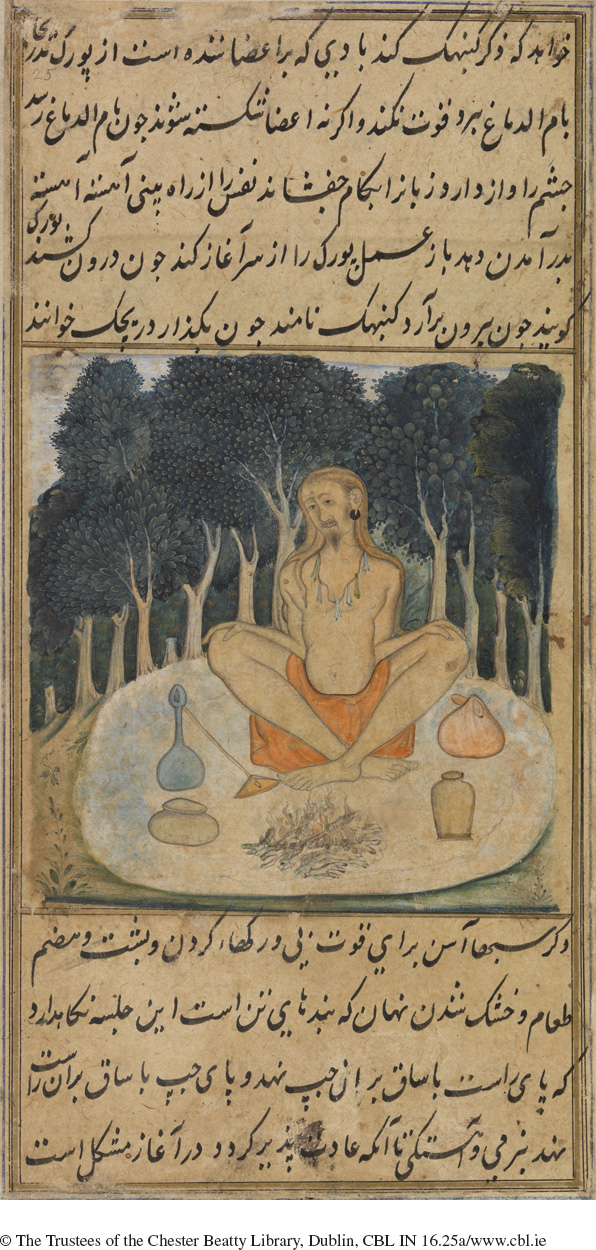Source 15.7
Religious Syncretism in Indian Art
Another site of religious blending in early modern India took shape at the court of the Mughal emperor. Akbar presided over what we might now call interfaith gatherings and created a blended religious cult for Mughal elites. European-
The Muslim rulers of the Mughal Empire were also taking a growing interest in that ancient Hindu mind-
Questions to consider as you examine the source:
- Why might Muslim rulers and Sufi masters want to incorporate Hindu-
based yoga techniques into their own practices? - What does the painting of a yogi with the face of Christ suggest about Indian views of Jesus?
- What do such paintings imply about relationships across religious lines in early modern India? How might Kabir respond to this painting?
Kumbhaka (breathing exercises)
